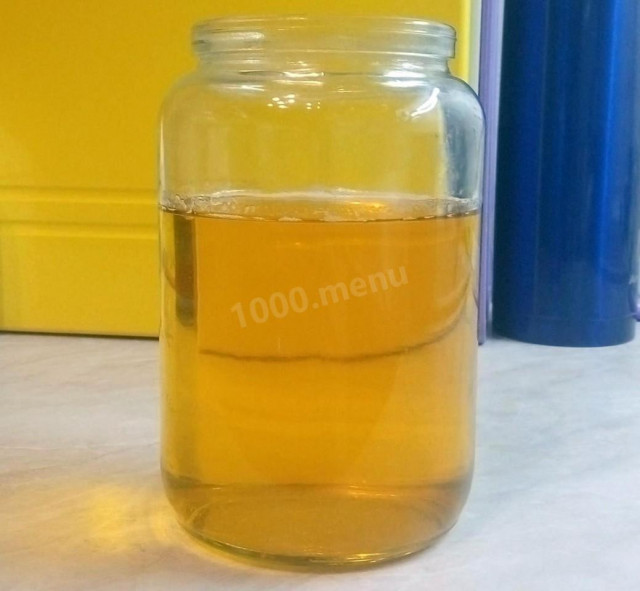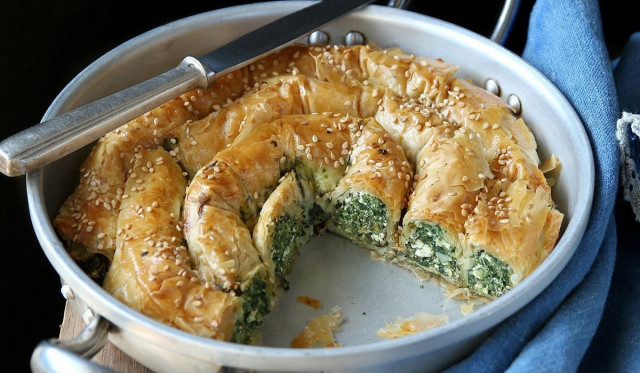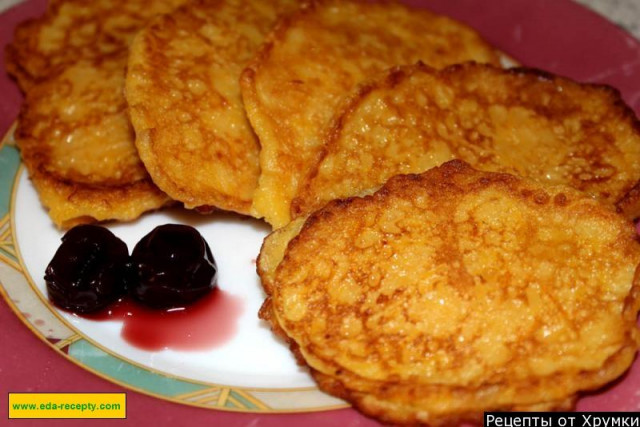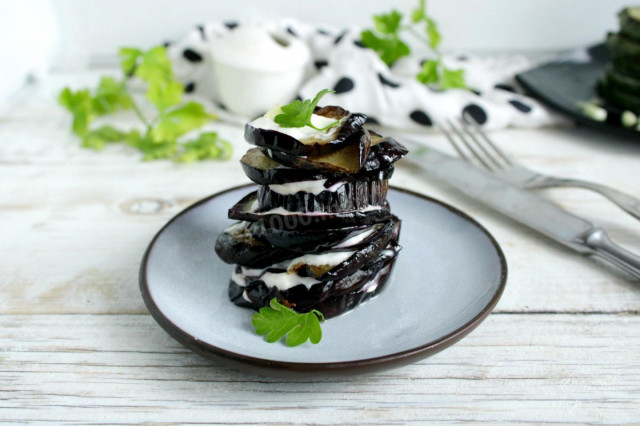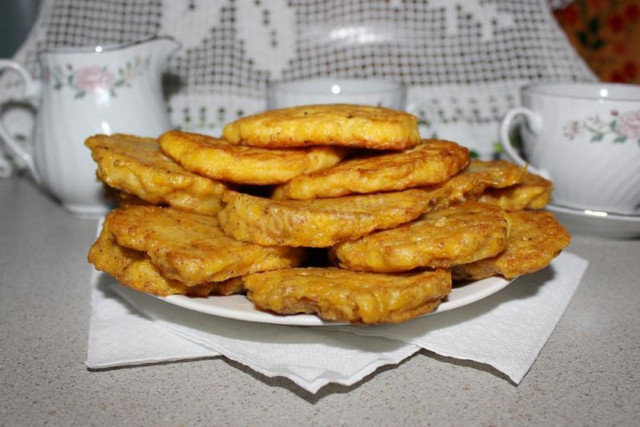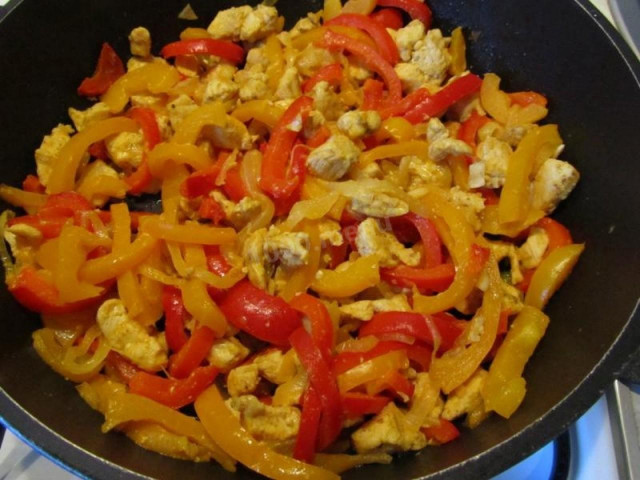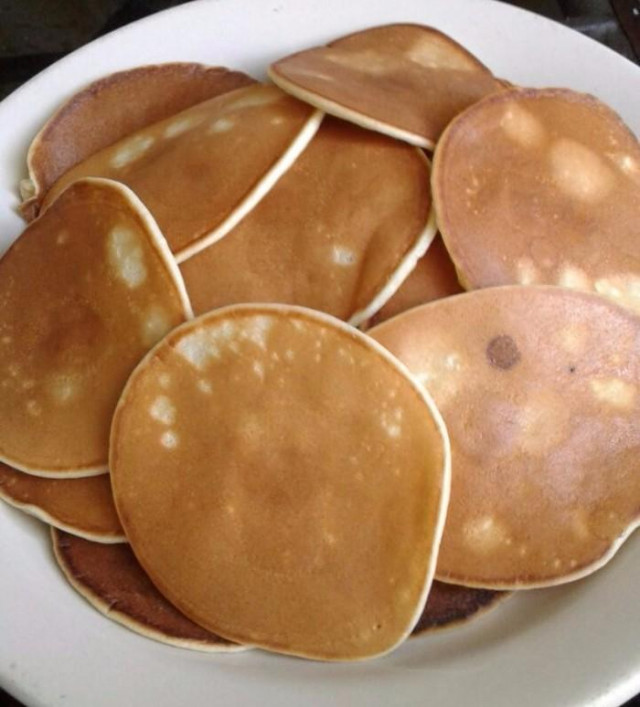Composition / ingredients
Step-by-step cooking
Step 1:
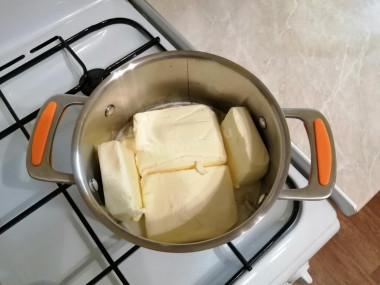
Unpack the butter and immediately put it in a clean saucepan. You can not even cut into smaller parts - it will melt anyway. You can use any pan. I took it with a thick bottom. Heat the oil for a while over medium heat, turning it over so that it melts slowly, does not sizzle and does not turn brown. Prepare a clean glass jar for ghee oil.
Step 2:
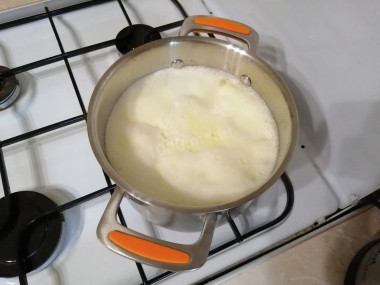
5-10 minutes after the start of cooking. The butter has almost completely melted. When the butter has melted, add more heat and bring to a boil.
Step 3:
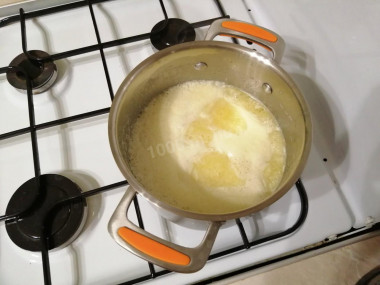
After 25-30 minutes from the start of cooking. When the surface is covered with foam bubbles, stir gently and adjust the heat to very low. The fractions are separated: protein fractions float up in the form of white foam, trans fats settle down (I will show them in the penultimate photo).
Step 4:
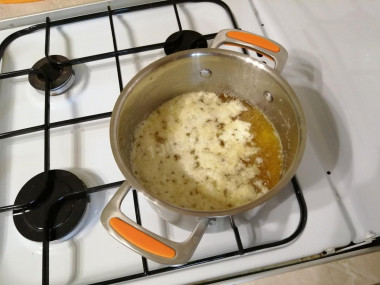
An hour after the start of cooking. We see a light fraction of butter separating. It is already possible to collect this foam (protein) in a container. You can add it to porridge or eat it right now - it's very tasty.
Step 5:
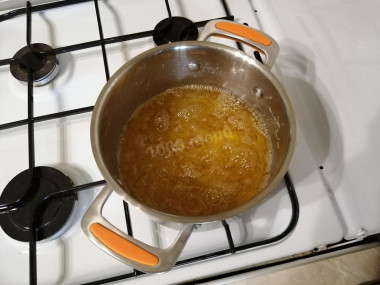
An hour after the start of cooking. It was I who removed all the protein formed.
Step 6:
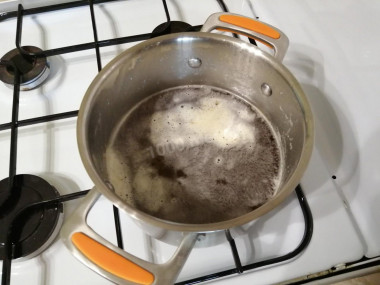
90 minutes after the start of cooking. We see that the remaining protein has surfaced. This is the last one - there will be no more. We remove it and leave it like this.
Step 7:
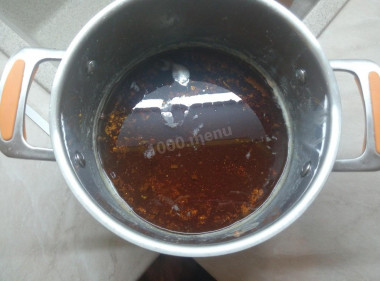
After 115 minutes from the start of cooking. Ghee oil is ready. That's how transparent it is. At the bottom we see spenders. Turn off the fire / heating and let the oil cool down a little (5-15 minutes) on the stove. Then, in the prepared jar, through cheesecloth, slowly drain the finished ghee oil from the pan. It is slow so that the jar does not crack from the temperature difference.
Step 8:
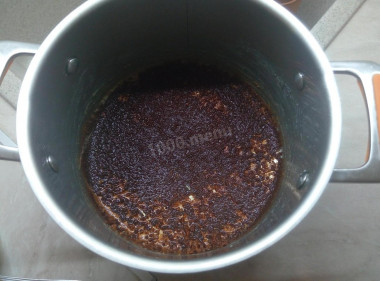
This is what is contained in butter and from which we oxidize it - trans fats are torn molecules of polyunsaturated acids. You can't eat it, even if it seems delicious.
Step 9:
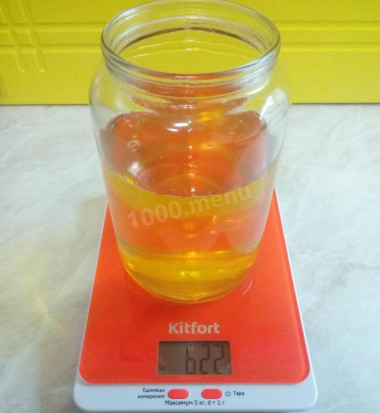
Isn't it like liquid gold? And the aroma in the cooking process is such that you want to try it right away. After a short time, the oil will harden and turn into a yellow grain.
Butter for making ghee can be any percentage of fat content, I used 72.5%. The better the butter, the greater the yield of ghee oil and less waste. As a result, we get pure oil with 99.9% fat content that can be stored forever. Because there's nothing left to oxidize. Therefore, it can be cooked at any temperature and put in any dishes - it will not burn and its taste will not change.
Caloric content of the products possible in the composition of the dish
- Butter 82% - 734 kcal/100g
- Amateur unsalted butter - 709 kcal/100g
- Unsalted peasant butter - 661 kcal/100g
- Peasant salted butter - 652 kcal/100g
- Melted butter - 869 kcal/100g

